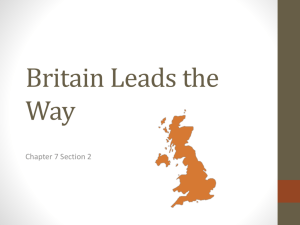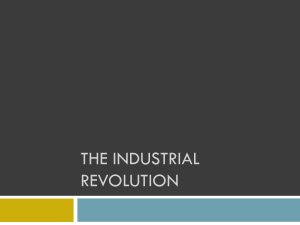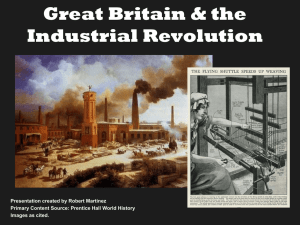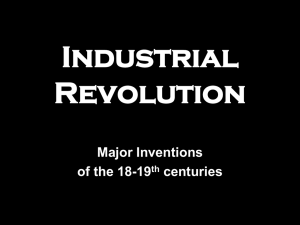The Industrial Revolution
advertisement
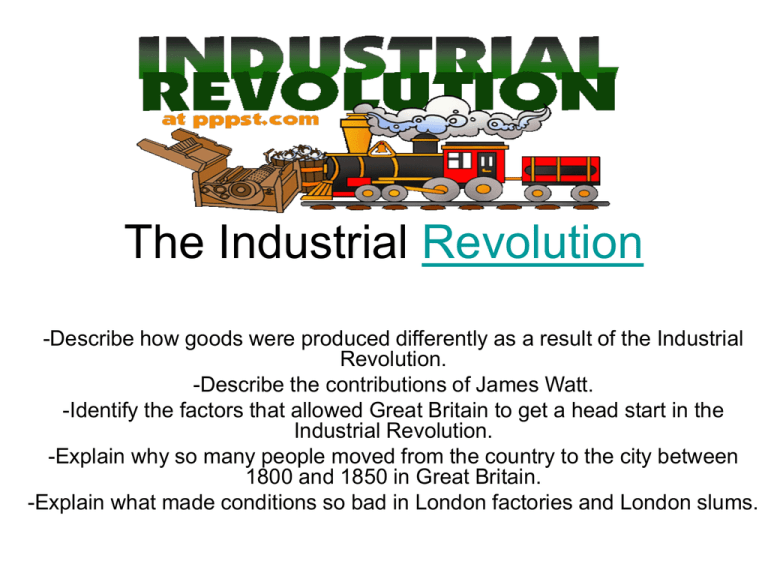
The Industrial Revolution -Describe how goods were produced differently as a result of the Industrial Revolution. -Describe the contributions of James Watt. -Identify the factors that allowed Great Britain to get a head start in the Industrial Revolution. -Explain why so many people moved from the country to the city between 1800 and 1850 in Great Britain. -Explain what made conditions so bad in London factories and London slums. The Old Ways • Between 1000 and 1750, humans and animals did all the work. • Machines were powered by hand, foot, or animal. • Most of the goods were made at home. • Textiles, or cloth that is either woven or knitted, was made at home. • This was known as the Domestic System. The New Ways • In Europe, new ideas began to arise about how to use machines to produce goods. • The change from human and animal power to machine power is known as the Industrial Revolution. • The creation of the steam engine kicked off the Industrial Revolution. – James Watt improved the steam engine so that it could power large machiens. • The next step was to lower costs by grouping machines together into one large place, a factory. – This became known as the factory system. Reasons why Great Britain launched the Industrial Revolution • There were many reasons why Great Britain launched the Industrial Revolution. • Great Britain had important natural resources, such as iron and coal. • It had many skilled workers. • People had money to invest in factories. • It had colonies to supply raw materials to buy goods. Great Britain and the Steam Engine • George Stephenson attached a steam engine to heels and put it on rails. • The train engine could do the work of 40 teams of horses. • The steam engine reached a top speed of 36 miles per hour. • This began the Railroad Age. • Steam power was also used by Robert Fulton who built the first successful steamboat and sailed it up the Hudson River from New York City to Albany. The Steamboat Terrible Conditions • Early factories were dark and dirty, with poor air quality. • Workers labored 12 to 15 hours a day, six days a week. • Most of the workers were women and children and they were paid far less than the men. • Children as young as five could be sent to work in textile mills. • Safety conditions were very poor. – Workers often suffered injuries such as lost arms or legs and were then fired if that occurred. Job of a Scavenger • A scavenger had the worst job. • They had to pick up the loose cotton from under the machinery by crawling under the running machines. Growing Cities Have Many Problems • During the Industrial Revolution, the population of Europe began to grow. • In Great Britain, the population went from a little more than 10 million to more than 20 million. • European cities began to grow and people started moving from farms and small villages to towns and cities. • Many workers lived in overcrowded slum apartments, called tenements. • There were few public services and some cities still used pigs to eat garbage that the residents produced. Tenements

